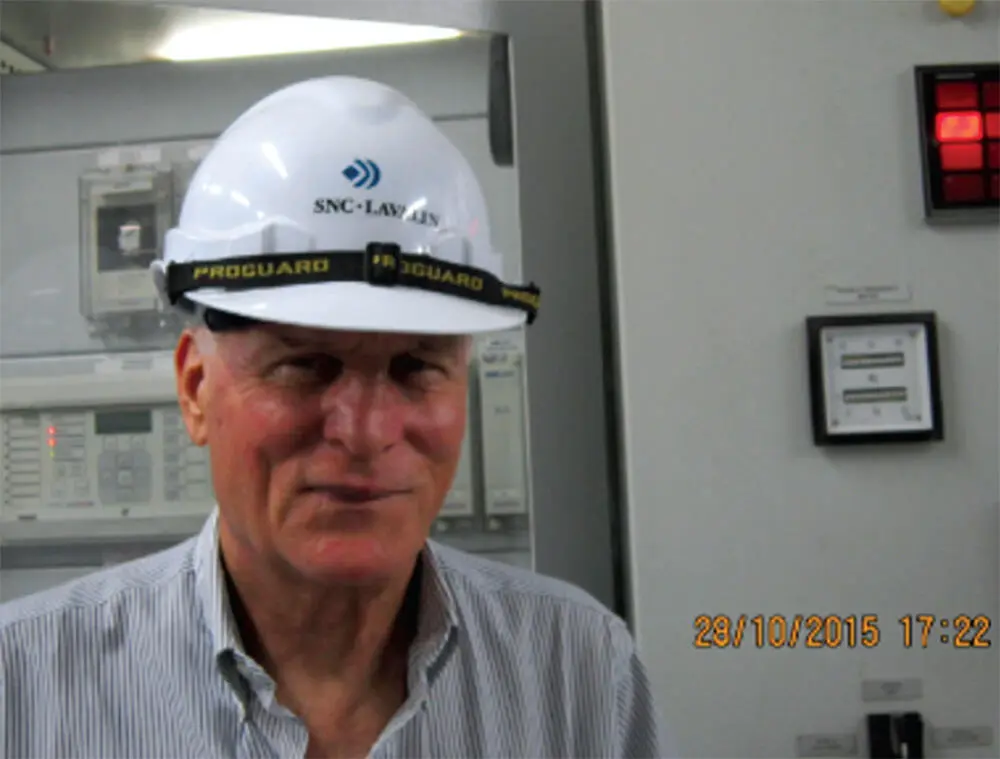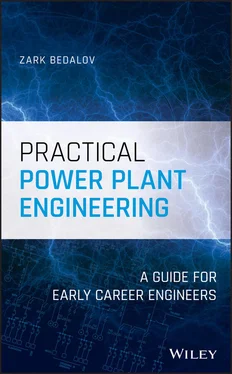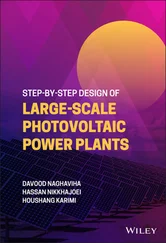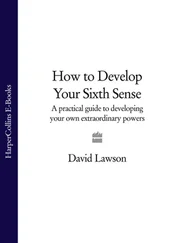Hopefully, this book will point to you the path on how engineers think in planning and resolving the problems and the basic elements of the engineering considerations; scope of work – big picture, engineering tasks, economics (cost of equipment and production), reliability, and automation requirements.
A few more notes.
As a junior engineer, I grasped from other engineers the concept of looking at the big picture, and what matters, while leaving other things for later. These are likely to change anyway, so why bother thinking of them now. Looking at a big picture means developing a design criteria for all parts of the project right at the start, such as, determining the short circuit levels (by computer) at various plant busses, allowable voltage drops, outage contingencies, big motor start, etc. Then, I develop overall key one line diagram. Once I have done that and have it on paper, I have my base and reference and talking points for everything that fits inside. It's not frozen in concrete. I can adapt it as I go along. If you do this once, you can replicate it again and again on other projects, based on the clients' requirements and new requests, capacity of production and levels of automation and security demanded.
Most employers do look for individuals who talk in terms of looking forward and grasping the whole concept of the project. One day at SNC‐Lavalin, I had a chance to see my file they made after my job interview and it read, “Impressive view of looking at big picture.”
Also, as a beginner engineer, I was once interviewed by an American company. In their books of potential candidates, next to my name was written: “Capable of looking and seeing a bigger picture. Hire him, when opportunity comes up.” I heard that little jewel from a head hunter who called me up and offered me other positions. Head hunters dig out their information from their contacts in the HR (Human Resources) of the companies they deal with. I was not born with it. I looked up to and learned it from other engineers who had impressed me.
When you do your work, share it with others. Be a team worker to be able to succeed in this type of work. There are other disciplines involved on the project and often you will find out something that will help you make a proper decision or make a modification you didn't notice before. So, be a team player. Then, when you are done with an assignment, tell your boss that you are done. He loves to hear that. If you are holding it back, soon it will be noticed. Bosses like to hold onto their best producers and keep them busy.
When you are finished with your assignment, tell your lead engineer to give you feedback. Don't be afraid of his review. Don't work in isolation. Share the ownership of your assignment with him. Involve him as you work on it. He will appreciate that. Besides, he is likely far more experienced than you are and experience is what counts in electrical engineering. He may have a different approach for certain parts. Broaden your thinking, evaluate his input and implement it if beneficial and more economical.
Always show interest. I was always curious. As a kid I wanted to be an engineer. Being a medical doctor also crossed my mind. Later on I realized that being a doctor would have been a mistake. I was not made for it. I function by logical thinking. I don't want to learn anything by heart. I learn and gain experience through logical interaction. Most of it was by observing and listening to others. Being interested puts you in front of the events. Many a time I was sent to investigate a situation about which I had not a clue. Nobody else on the project had a clue either. So, others rejected it and declined to be involved. I always went for it, tried my best and most of the time I found solutions.
Enjoy engineering. This has been your biggest investment so far. Go for it.
Vancouver, BC, Canada
16 June 2019
Zark Bedalov
The book was initially prepared for lectures for students at the University of Electrical Engineering, Zagreb, Croatia. Thank you Dean Prof. Mislav Grgic and ProDean Prof. Marko Delimar.
This author thanks all the contributors, mainly other engineers who helped in creation of this book, either directly or through discussions and suggestions.
I thank SNC Lavalin for sending me on interesting projects and assignments to share experience with knowledgeable engineers from the various equipment suppliers, owners' engineers and project managers, some of who insisted on me to write this book.
Eddie Fung of SNC Lavalin for major contributions in all parts of the book.
Wes Yale of TNC Power Systems for grammar and technical edits and contributions to Chapter 12.
Jose Galindo of Galmea Consultants, Spain for their contribution on the use of Waste Heat, Chapter 20.
University Professor Martin Jadric for contributions to Chapters 14and 15.
Ken Thomson, P.Eng of SNC Lavalin for the exchange of ideas.
Nancy Walczak of SNC Lavalin who taught me how to put the illustrations together.
GrafikaPlus.hr for preparations of the illustrations.
Khusrau Baghaei of SNC Lavalin for contribution to Chapter 17.
Sorin Segal. P. Eng. Technical editing.
Bob McNair, P. Eng. Technical editing.
Michael McBurnie, P. Eng. Technical editing on Chapter 15and 23.
Mohd Akram, Abdullah, Eng. TNB, Malaysia, Power plant commissioning and managing
Sumit Verma, CV Shahin Kumar and Dhaneesh Kc of Alstom (GE) India for great technical exchanges on a recent project in Malaysia.
And many more.
Let us not forget those engineers who I have worked with and who have left significant impact on my early career.
| Andy Sturton, Shawinigan Engineering |
Relay Protection, Grounding |
| Jim Erath, Shawinigan Engineering |
Power System Engineering |
| Ernie Siddel, Canadian Atomic Energy |
Reliability |
| Farid P. Dawalibi, Shawinigan Engineering |
Grounding |
The first three I knew as experienced electrical engineers who readily shared their valuable experience on me and other young engineers. The forth one was a junior engineer just like me when we worked on some power projects. He took great interest in the grounding issues on the projects. Then he wrote the first computer program to calculate the substation grounding requirements. If one searches on the net anything to do with grounding, his name will appear as one of the greatest authorities in this area, including on so many IEEE papers.

Zark Bedalovexplains that as a kid he was always intrigued by electricity. He would turn a light switch on and off for hours and observed the light to come on. If the switch sparked, that intrigued him even more. There was no one there to explain to him what was going on in the wires. In his early school days, he was punished for smashing a capacitor to pieces for trying to see what was inside. A lot of greasy paper was inside.
He graduated at University of Electrical Engineering, Zagreb, Croatia, in 1965. Also, attended some master degree studies at the University of Toronto.
His first job was in a factory for power transformers. Soon he realized that making a transformer is 90% mechanical and 10% electrical. That was not what he was expecting. So he skipped over the border to Wiena, Austria, and arranged for immigration to Canada. Finding a job in Canada was not easy, in particular if you are an engineer. Being an engineer comes with responsibility and that requires “Canadian Experience.” It took him about six months to start as a draftsman on mining projects. Had a lot of support from many senior engineers and three years later was certified a “Professional Engineer.”
Читать дальше













